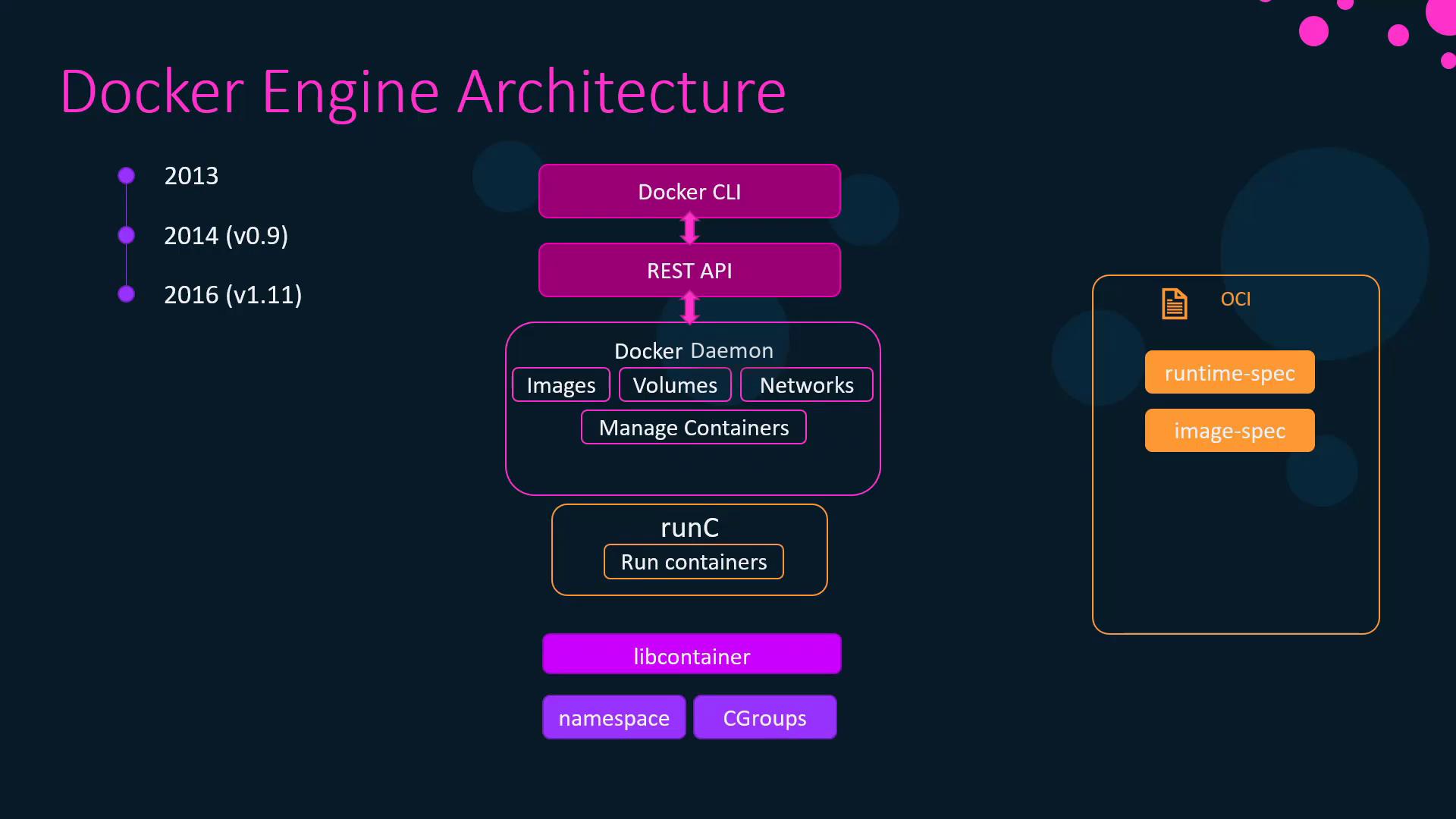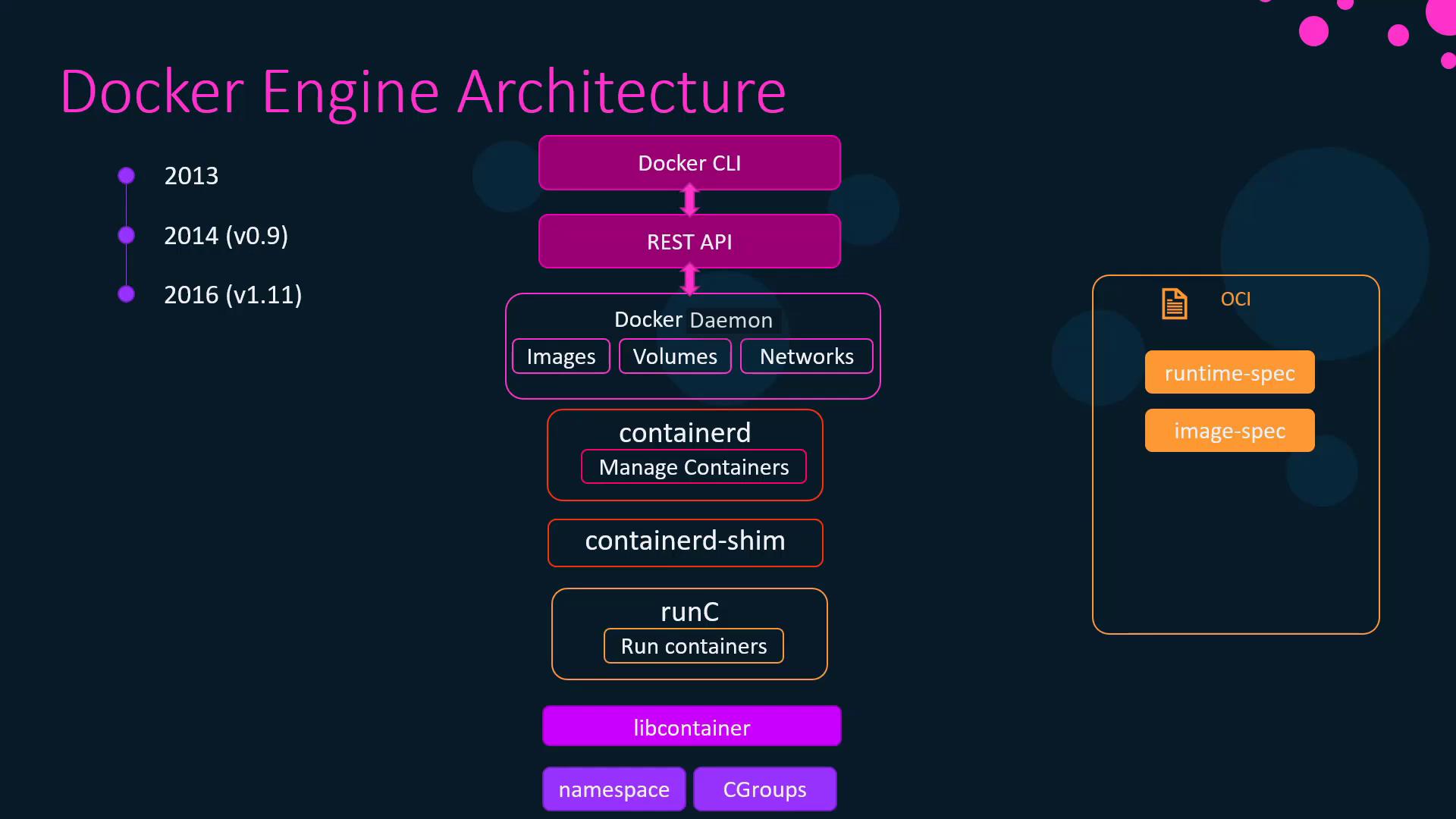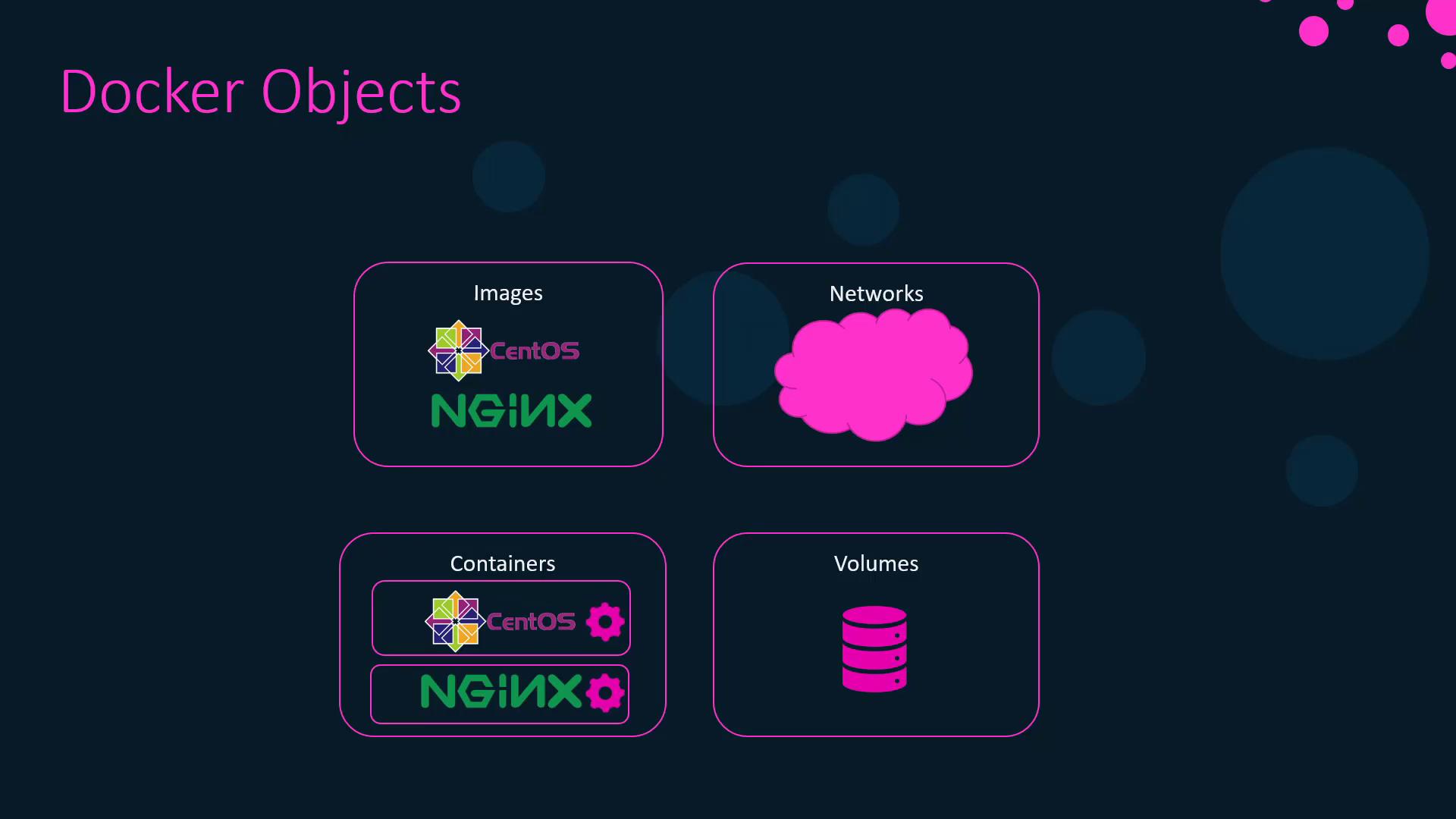Docker Certified Associate Exam Course
Docker Engine
Docker Engine Architecture
In this article, we dive into Docker Engine architecture, exploring its core components, how it evolved from LXC to Libcontainer, and the standards defined by the Open Container Initiative (OCI). You’ll also learn about key Docker objects, the registry model, the container creation flow, and how to verify your Docker installation.
Key Components
Docker Engine consists of three primary parts that work together to build, ship, and run containers:
- Docker Daemon (
dockerd)
The background service that manages images, containers, networks, and volumes on your host. - REST API
A set of HTTP endpoints that expose the daemon’s functionality to clients and automation tools. - Docker CLI (
docker)
The command-line interface that sends commands to the REST API.
From LXC to Libcontainer
When Docker launched in 2013, it used Linux Containers (LXC) to isolate processes via namespaces and cgroups. By version 0.9, Docker introduced Libcontainer, a Go library that interfaces directly with kernel primitives—eliminating the LXC dependency and simplifying container management.
The Open Container Initiative (OCI)
Before 2015, container formats and runtimes were fragmented. Docker, CoreOS, and other industry leaders formed the Open Container Initiative (OCI) to standardize:
- Runtime Specification
Defines lifecycle operations (create,start,delete, etc.). - Image Specification
Specifies how container images are formatted and distributed.
With these standards, Docker Engine 1.11 was refactored into modular components:

- runC
The OCI-compliant runtime that handles low-level container operations. - containerd
A daemon responsible for managing runC instances, image transfer, and storage. - containerd-shim
Allows containers to keep running independently of containerd, ensuring resilience if the daemon restarts.

Core Docker Objects
Docker Engine manages four primary resource types:
| Object | Description |
|---|---|
| Images | Read-only templates composed of layered filesystem snapshots and metadata. |
| Containers | Instances of images providing a writable layer and running processes. |
| Networks | Virtual networks enabling container-to-container and external communication. |
| Volumes | Persistent storage volumes decoupled from container lifecycles. |

Docker Registry
A registry is a service for storing and distributing Docker images:
- Docker Hub (default public registry)
- Private Registry (self-hosted)
- Docker Trusted Registry (DTR) (enterprise-grade, on-premises)
Container Creation Flow
When you run docker run, Docker follows a series of steps:
- CLI to API
The Docker CLI translates your command into a REST API call. - Daemon Processing
The daemon checks for the image locally or pulls it from the registry. - containerd
Converts the image into an OCI bundle. - containerd-shim
Hands off the bundle to runC and monitors the container’s lifecycle. - runC
Uses kernel namespaces and cgroups to spawn and isolate the container.
Example:
docker container run -it ubuntu
Verifying Your Installation
After installing Docker on CentOS or Ubuntu, confirm that everything is set up correctly:
docker version
Sample output:
Client: Docker Engine - Community
Version: 19.03.5
API version: 1.40
Go version: go1.12.12
Server: Docker Engine - Community
Engine:
Version: 19.03.5
API version: 1.40 (minimum version 1.12)
containerd:
Version: 1.2.10
runc:
Version: 1.0.0-rc8+dev
Check the CLI version:
docker --version
# Docker version 19.03.5, build 633a0ea
And get system-wide details:
docker system info
Sample excerpt:
Server:
Containers: 0
Running: 0
Images: 0
Server Version: 19.03.5
Storage Driver: overlay2
References
Watch Video
Watch video content